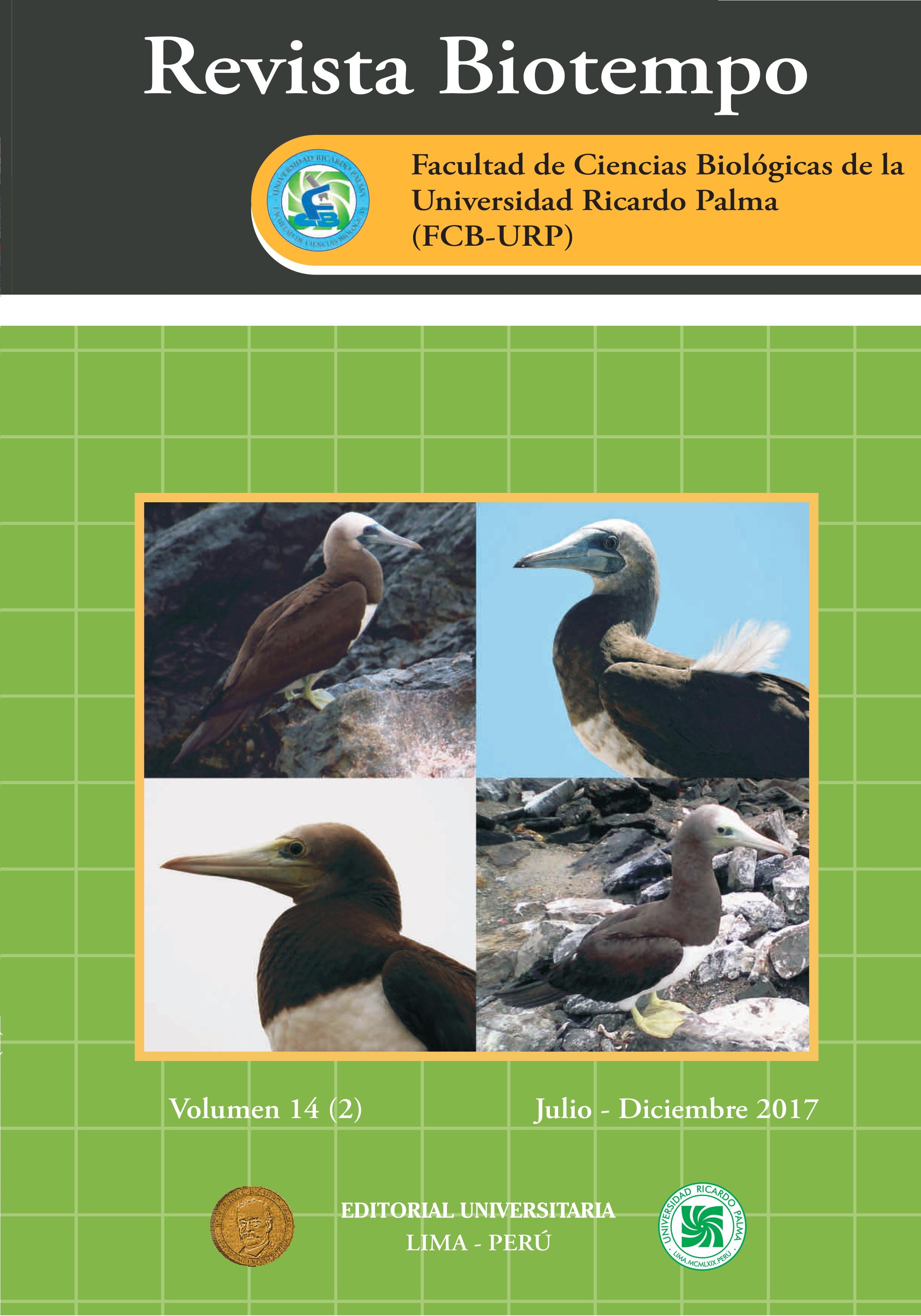RELATIVE FREQUENCY OF CANINE DERMATITIS IN THREE VETERINARY CLINICS OF THE DISTRICT OF MAGDALENA DEL MAR, LIMA, PERU
DOI:
https://doi.org/10.31381/biotempo.v14i2.1319Abstract
Dermatological diseases are a common reason for consultation in the daily veterinary clinic being one of the diseases that most aff ect canines in Peru. Th e present study aimed to determine which type of dermatitis is most frequent in canines (Canis familiaris L.) of the Lima district of Magdalena del Mar, Lima, Peru, for which the types of dermatitis diagnosed by race, sex and age of the canines of the district were determined. A total of 4231 clinical records were collected from three veterinary clinics in the district of Magdalena del Mar, from a total of 13 clinics located in the district. Th e clinical records considered in this study were those from February 2011 to January 2015, of which only 1915 records corresponded to dogs with residence in the district. Th e data taken from these clinical records were race, sex, age, year of diagnosis of the dermatological disease and type of dermatitis. We found 538 new cases of dermatitis corresponding to the number of males of 273 (50.74%) and that of females of 265 (49.26%). Th e results indicated that the most common dermatitis was infectious dermatitis with 248 cases (46.1%) and within this category, bacteria (113 cases, representing 45.56% within its category). Secondly, allergic dermatitis was found by fl ea bites, with 91 cases, representing 55.15% within its category. On the other hand, it was observed that it is more common for males to develop dermatitis (50.74%) and that it occurs more in mixed-breed dogs (29%). Regarding age, the group with the highest relative frequency were dogs older than 10 years with 194 cases (36.1%).










